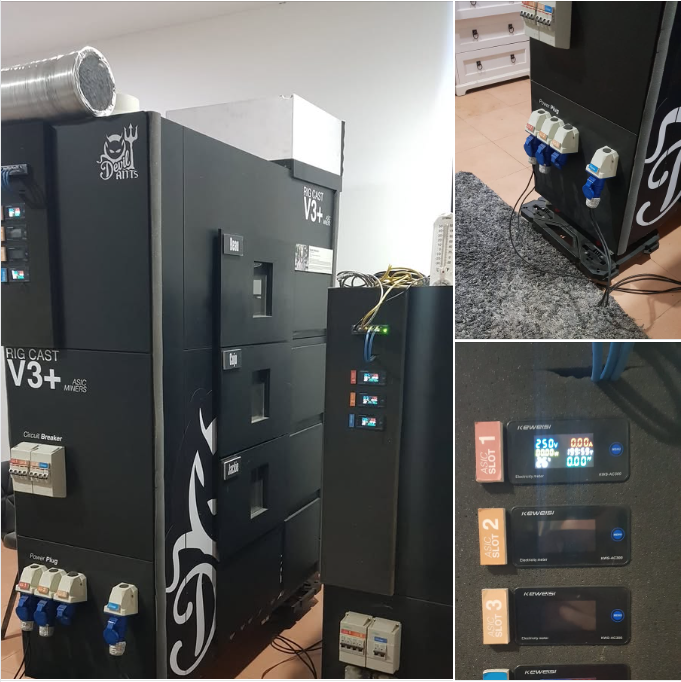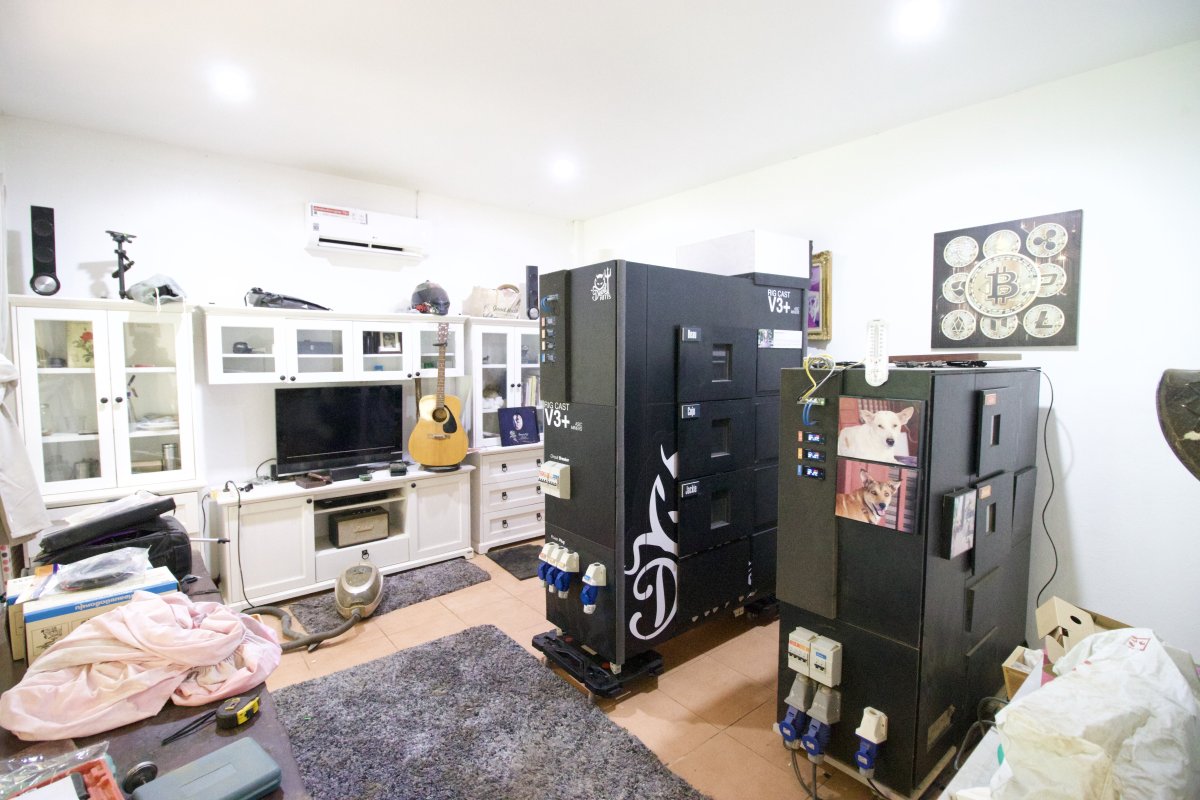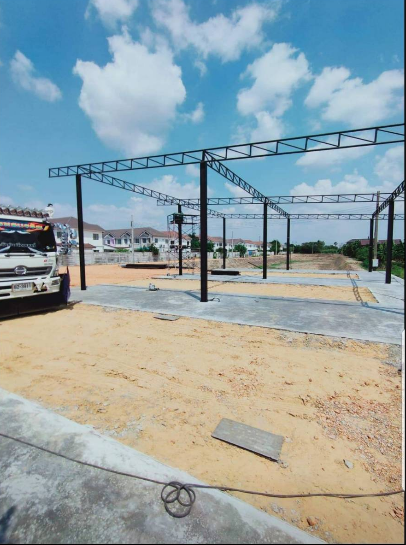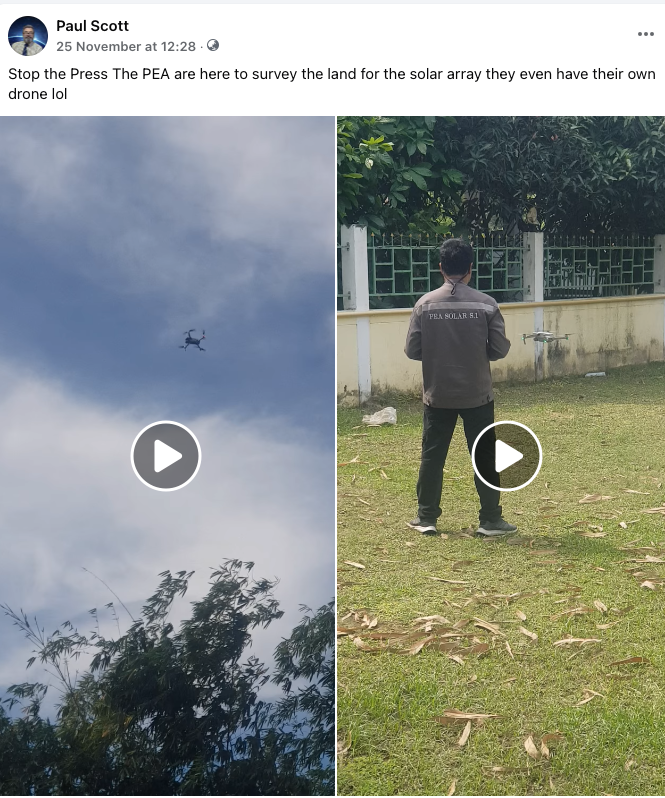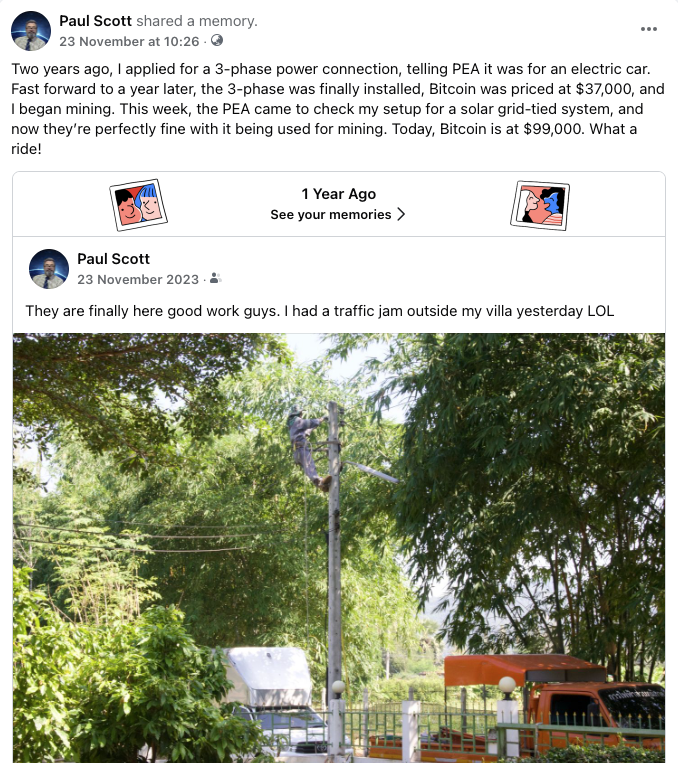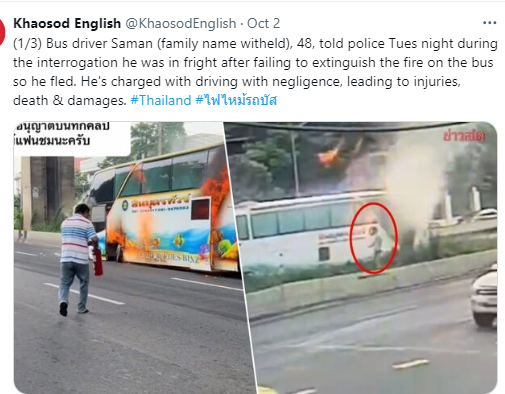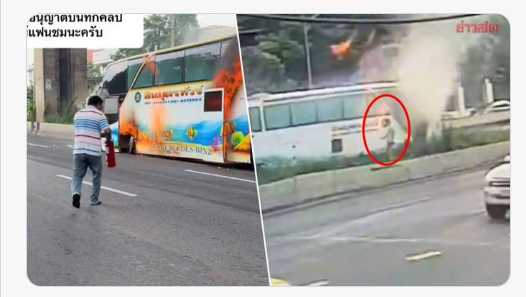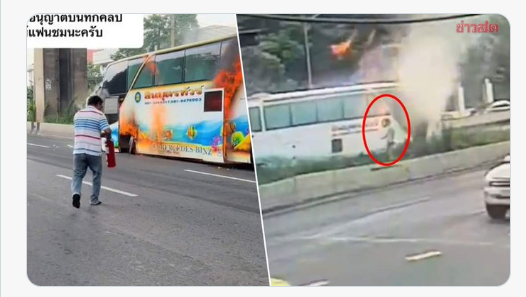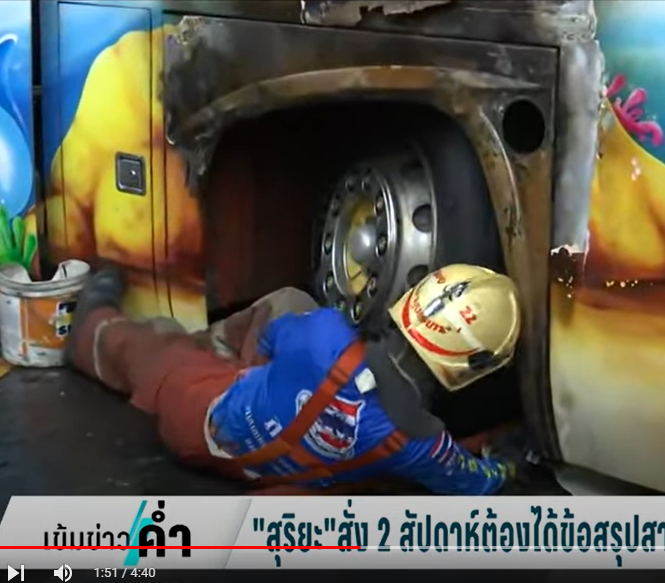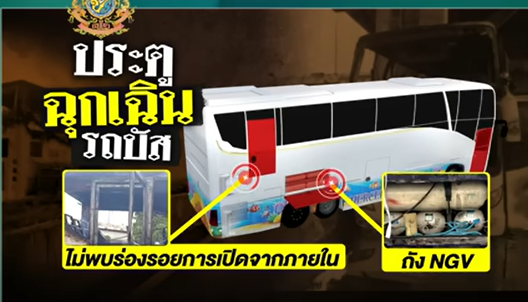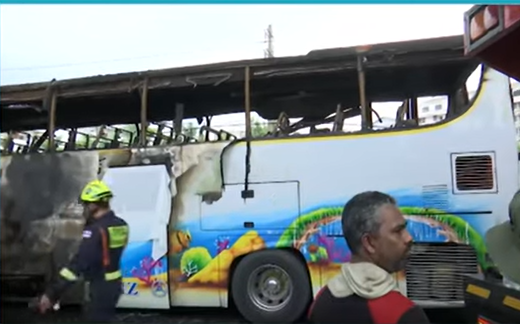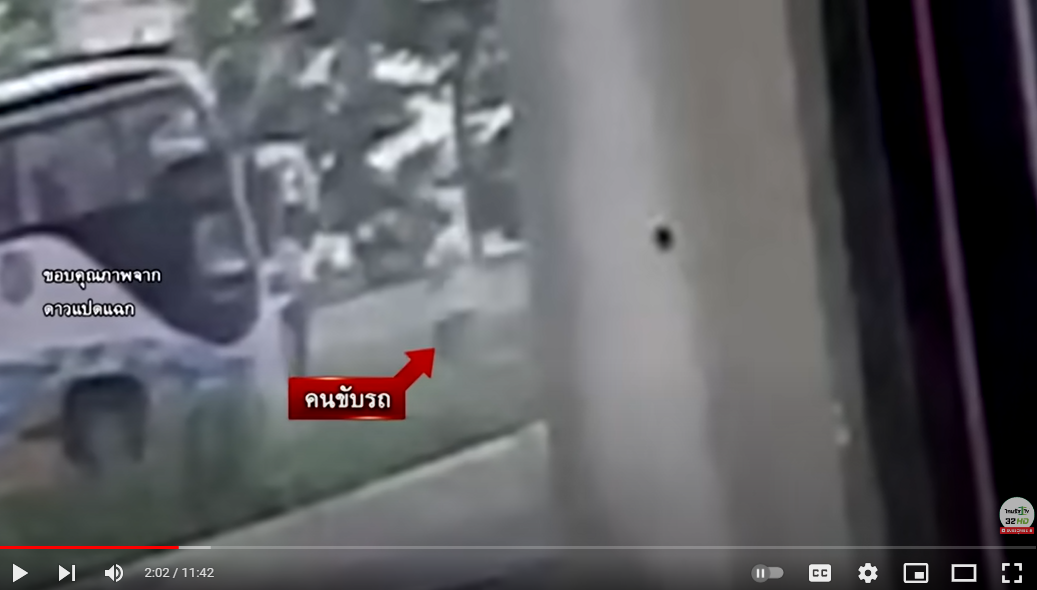-
Posts
510 -
Joined
-
Last visited
scott1999's Achievements
-
Yesterday the electrician promised to connect the new soundproof box for the new miners to my system but he didn't come and didn't answer my messages so I did it myself. It is working ok, I could have blown myself up, but I was so angry that I took the day off, just for him not to show up. This is one of the downsides of living in Thailand, but the advantages outweigh the disadvantages by a long way.
-
Today is a big day. The electrician is coming to plumb in the bigger new soundbox Stage 1 is now completed. On to stage 2 as explained in my Facebook post They are ASIC miners that mine Bitcoin. Stage 1: We were to get 3-phase electricity because if you don't have three-phase, you could run one miner off a standard home set-up only. But with three-phase and the correct transformer you can run 10 miners. Stage 2: Running at half capacity for 2025. Stage 3: 2026 will be running at full capacity which will need the solar system to help pay for the electricity. It's not just about the money it's just another way to escape the matrix no banks no inflation, no worries. LOL this is another reason I love Thailand can you imagine me trying to do this in a residential estate in England my God they would lock me up LOL Are we getting it yet? I'm proud to be part of this network they are stealing our time and energy with inflation for me not anymore. https://x.com/i/status/1875236330755822025
-
Update: PEA Will help with the structure of the canopy before their workmen come to install the system, added bonus they will put the system in before I even pay the deposit of 50%. I think I read the message wrong I think I can pay after the canopy structure has been built it's okay nice of them to help
-

Abduction Of My Daughter, By My Thai Wife
scott1999 replied to scott1999's topic in Family and Children
-

Abduction Of My Daughter, By My Thai Wife
scott1999 replied to scott1999's topic in Family and Children
Thank you, my friend. My Daughter is coming to stay with me this Christmas thank you everyone that contributed with my situation I talk to my daughter most days now, she lives in England and I live near Hua Hin. Thank you Thaivisa for keeping this thread alive -
Hi, Wombat you guessed wrong my friend. Sorry, I've been busy as you can see. Quick update. PEA has given me a quote for a 20 kW grid-tied system with no batteries 420,000 Half upfront the rest can be on finance I think I will pull the trigger because that is my dream come true. I really need a bigger system but beggars can't be choosers. My electricity bill is excessive now so this must be done. PEA were and are super nice people very professional very high level of education and most can speak very good English better than my Thai LOL
-

Bus Owner Caught Trying to Hide Illegal Gas Cylinders After Deadly Fire
scott1999 replied to webfact's topic in Thailand News
I'm not going to argue on this forum as it's just completely a waste of time. I was in this business in England for over 20 years the duty of the driver is the care and safety of the passengers this could have been dealt with very differently if the driver had stopped the bus turned off the engine turned round and said three words get off now and he had helped them leave the bus He would be a hero today. Instead he went looking for a fire extinguisher and trying to open the back Emergency doors that he should have checked before any passengers got on the vehicle. Obviously the bus was badly maintained it had been turned into a bomb with 11 gas cylinders with one of the cylinders in the passenger section of the bus a company that has form of their driver's running away in the past and now it looks like the Ministry of transport officers were getting kickbacks to certify these busses death traps so as I was saying 1: The drivers only job in an emergency is the safety of the passengers not to try and put out a fire he can do that afterwards once all the passengers have left the bus and don't say they couldn't get off because of the doors and even in that video there's a student that got out of the door there was half open. And as for the state of the interiors of these Thai busses they've turned them into bombs on wheels with everything inside flammable such as the curtains the plastic fans the seat covers as you can see from the photos of the bus the whole interior was gutted now look at a bus in England no curtains no padding on the ceilings no fans just clean and safe they need to stop turning these vehicles into mobile discos and understand their only responsibility is to get their passengers from A to B as safely as possible. Here's a list of the duty of care that each driver should be trained to understand and do in an emergency which of course this driver didn't do. In the event of a fire, your top priority as a bus or coach driver is to help passengers disembark as quickly and safely as possible before the fire escalates. Here's how the procedure should go: Stop the vehicle safely: Pull over immediately and turn off the engine to reduce any additional risk of the fire spreading. Open the doors: Immediately open the doors to allow passengers to disembark and leave the vehicle quickly. Instruct passengers: Calmly but firmly instruct passengers to exit the bus in an orderly manner. Encourage them to leave personal belongings behind to speed up the evacuation. Use emergency exits: If the main doors are blocked or unsafe, direct passengers to use emergency exits, including windows or roof hatches. Move passengers to a safe distance: Once outside, guide everyone to a safe distance, away from the vehicle and out of harm’s way. Call emergency services: After ensuring all passengers are safe, contact emergency services to report the fire and get help. Once everyone is safely off the vehicle, then, if it’s safe and you are trained, you can attempt to control the fire with a fire extinguisher. However, passenger safety is always the first priority. -

Four Charges Filed Against Driver in Bus Fire That Killed 23
scott1999 replied to webfact's topic in Thailand News
All their busses had uncertified gass tanks on their busses as this article proves I would expect the operator to do prison time for this From the article However, the Shinbutra Company failed to send the five other buses for inspection at the Lopburi Provincial Transport Department; instead, they went directly to an auto shop in Nakhon Ratchasima Province.... อ่านข่าวต้นฉบับได้ที่ : https://www.khaosodenglish.com/news/2024/10/03/fatal-bus-fire-probe-exposes-thai-officials-and-company-fraud-claims/?fbclid=IwY2xjawFrjI9leHRuA2FlbQIxMQABHbRilX5bY8034nce_60Hs71LFcbLYExpu56AIeUmesI6LFDEpykP6qKaRA_aem_XyFW_tVT9uZolG8xJlNcdQ Where they had the uncertified tanks removed This is a step in the right direction The new regulations require chartered buses to have staff on board, similar to regular public buses. These employees must be trained and complete a course on crisis management My ex girlfriend works for the Ministry of labor labor informed that there was four minutes before the bus was engulfed with flames any Driver following procedure would have had those passengers off that bus in less than two minutes. -

Four Charges Filed Against Driver in Bus Fire That Killed 23
scott1999 replied to webfact's topic in Thailand News
The driver would have been a hero if he'd followed procedure That photo that I've posted is one of the saddest I've ever seen he's walking towards the bus that is engulfed with fire too late the children are probably already dead he should never have left that bus he could have got them out even through the smallest hole because he got out In the event of a fire, your top priority as a bus or coach driver is to help passengers disembark as quickly and safely as possible before the fire escalates. Here's how the procedure should go: Stop the vehicle safely: Pull over immediately and turn off the engine to reduce any additional risk of the fire spreading. Open the doors: Immediately open the doors to allow passengers to disembark and leave the vehicle quickly. Instruct passengers: Calmly but firmly instruct passengers to exit the bus in an orderly manner. Encourage them to leave personal belongings behind to speed up the evacuation. Use emergency exits: If the main doors are blocked or unsafe, direct passengers to use emergency exits, including windows or roof hatches. Move passengers to a safe distance: Once outside, guide everyone to a safe distance, away from the vehicle and out of harm’s way. Call emergency services: After ensuring all passengers are safe, contact emergency services to report the fire and get help. Once everyone is safely off the vehicle, then, if it’s safe and you are trained, you can attempt to control the fire with a fire extinguisher. However, passenger safety is always the first priority. -

Four Charges Filed Against Driver in Bus Fire That Killed 23
scott1999 replied to webfact's topic in Thailand News
I had an operator's license in England for over 20 years without one death on my conscience so I do know a thing or two/ Yesterday when I was posting we didn't know the full facts we still don't know all of them now but we know a lot more. This afternoon I spoke to my ex girlfriend who works for the Ministry of Labor and they were informed that they had 4 minutes before the bus was engulfed with fire I tried to explain to her you only needed one or two minutes to get all the passengers off that bus safely. In my opinion now every death was avoidable, accidents happen to new busses either it's their fault or it's the car in front or it's the road or it's the weather it can be anything it's what you do once you've brought the vehicle to a stop it's those precious seconds that can save lives. In the event of a fire, your top priority as a bus or coach driver is to help passengers disembark as quickly and safely as possible before the fire escalates. Here's how the procedure should go: Stop the vehicle safely: Pull over immediately and turn off the engine to reduce any additional risk of the fire spreading. Open the doors: Immediately open the doors to allow passengers to disembark and leave the vehicle quickly. Instruct passengers: Calmly but firmly instruct passengers to exit the bus in an orderly manner. Encourage them to leave personal belongings behind to speed up the evacuation. Use emergency exits: If the main doors are blocked or unsafe, direct passengers to use emergency exits, including windows or roof hatches. Move passengers to a safe distance: Once outside, guide everyone to a safe distance, away from the vehicle and out of harm’s way. Call emergency services: After ensuring all passengers are safe, contact emergency services to report the fire and get help. Once everyone is safely off the vehicle, then, if it’s safe and you are trained, you can attempt to control the fire with a fire extinguisher. However, passenger safety is always the first priority. Like I said how many children could he have saved if he had done it properly and not jumped off the bus to save himself plus, And for God's sake get rid of all the curtains plastic fans, and ornaments that are just fire traps that they deck out these coaches with In the second picture there's the driver with a fire extinguisher the children are still on the bus it should be passengers off the bus first then you can try and deal with the fire if you want to he did it the wrong way around this is one of the saddest pictures i've ever seen -

Four Charges Filed Against Driver in Bus Fire That Killed 23
scott1999 replied to webfact's topic in Thailand News
I agree Thailand is a magnificent country with lovely people and the laws are more relaxed. But if you're telling me there should be no rules or laws or safety checks or training to carry 50 plus children and teachers then I will have to disagree with you good luck on your next bus ride. We are but guests in their beautiful country -

Four Charges Filed Against Driver in Bus Fire That Killed 23
scott1999 replied to webfact's topic in Thailand News
And there you have it the passengers were still on the bus and the driver was looking for a fire extinguisher but was never going to put the fire out if he had done it properly and got the passengers off the bus as soon as there was a problem I'm guessing there would have been no fatalities -

Four Charges Filed Against Driver in Bus Fire That Killed 23
scott1999 replied to webfact's topic in Thailand News
Well this looks suspiciously like a blowout but as I said it was a moving bomb anything could have set it off -

Four Charges Filed Against Driver in Bus Fire That Killed 23
scott1999 replied to webfact's topic in Thailand News
I can't speak Thai but I have been following the news they have video footage of the driver running to the next bus to try and get a fire extinguisher if he'd done as he was supposed to which was get all the passengers off the bus first They possibly could have been no fatalities who knows As I said in my very first post a lot of money was spent on the cartoon character respray and nothing on the safety or training of the driver look at that emergency door very close to the tanks wonderful great planning to me it just looks like a bomb Again here is the procedure of what a driver should do in the instance of a fire In the event of a fire, your top priority as a bus or coach driver is to help passengers disembark as quickly and safely as possible before the fire escalates. Here's how the procedure should go: Stop the vehicle safely: Pull over immediately and turn off the engine to reduce any additional risk of the fire spreading. Open the doors: Immediately open the doors to allow passengers to disembark and leave the vehicle quickly. Instruct passengers: Calmly but firmly instruct passengers to exit the bus in an orderly manner. Encourage them to leave personal belongings behind to speed up the evacuation. Use emergency exits: If the main doors are blocked or unsafe, direct passengers to use emergency exits, including windows or roof hatches. Move passengers to a safe distance: Once outside, guide everyone to a safe distance, away from the vehicle and out of harm’s way. Call emergency services: After ensuring all passengers are safe, contact emergency services to report the fire and get help. Once everyone is safely off the vehicle, then, if it’s safe and you are trained, you can attempt to control the fire with a fire extinguisher. However, passenger safety is always the first priority.


.thumb.jpeg.42eea318e3350459f0aaaa5460326bca.jpeg)






